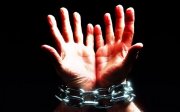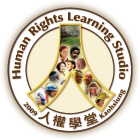
|
 Girls, Human Trafficking, And Modern Slavery In America Girls, Human Trafficking, And Modern Slavery In America
On the 150th anniversary of when President Lincoln issued the preliminary Emancipation Proclamation, which set the date for the freedom of more than 3 million enslaved Americans, President Obama called for the end of modern day slavery. The president’s historical speech delivered at the Clinton Global Initiative, called for major policy changes, at home and abroad, to combat the enslavement of millions of women, men and children.
Many of the slaves today are girls. Born in America. Hidden in plain view.
They are the lost girls, standing around bus stops, hanging out by runaway youth shelters, or advertised online. At the Motel 8 or the Marriott, at McDonalds or the clubs.
According to the FBI, there are currently an estimated 293,000 American children at risk of being exploited and trafficked for sex. Forty percent of all human trafficking cases opened for investigation between January 2008 and June 2010 were for the sexual trafficking of a child. And while the term trafficking may conjure images of desperate illegal immigrants being forced into prostitution by human smugglers, 83 percent of victims in confirmed sex trafficking cases in this country were American citizens.
The majority of these children being sold for sex are girls between the ages of 12 and 14 . They are girls abducted or lured by traffickers and then routinely raped, beaten into submission, and sometimes even branded. When the girls try to run away, their traffickers torture and or gang rape them.
They are girls like Jackie who ran away from an abusive home at 13 only to be found alone and hungry by a trafficker who promised to love her like a father/boyfriend/Prince Charming. He sold her to at least six different men every night. When she begged him for food or rest, he beat her.
Young girls like Jackie are the new commodities that traffickers and gangs are selling. In many respects, the girl trade has replaced the drug trade. Drug routes have been repurposed to sell girls, along I-95, and up and down the I-5 corridor. The emergence of the Internet also allows the sale of a girl to be executed with ease, discretion, and convenience for the buyer. And unlike selling a drug, the girl is “reusable.”
The ugly truth is that it is less risky and more profitable to sell a girl than crack cocaine or meth. The U.S. government spends 300 times more money each year to fight drug trafficking than it does to fight human trafficking. And the criminal penalties for drug trafficking are generally greater than the ones usually levied against those who traffic in girls. Traffickers, and especially the politely termed “Johns,” are rarely arrested and prosecuted. Which explains the growing demand for vey young girls— at the click of a mouse, a “John” can purchase a girl online on legitimate websites like Backpage.com, with minimal fear of punishment.
Many of these girls who are bought and sold for sex come out of a broken foster care system. “Of the trafficking victims in Alameda County, California, 55 percent were from foster youth group homes. In New York, 85 percent of trafficking victims had prior child welfare involvement. And in Florida, the head of the state’s trafficking task force estimates that 70 percent of victims are foster youth.
T” was born into the foster care system and trafficked at the age of 10, sold to men all over California, Washington, Oregon and Nevada. She recently shared her own observation at a Congressional briefing on how foster care rendered her vulnerable to being exploited. “In most of my 14 different placements in foster care homes, I was raped, and attached to a check. I understood very early that I could be raped, cared for, and connected to money. It was therefore easy to go from that to a pimp, and at least the pimp told me that he loved me.”
Unfortunately, most child welfare systems have failed to properly identify and assist trafficked and exploited children.
The protections, services, and protocols established for abused and neglected children within the child welfare system are rarely extended to trafficked girls. Instead, the girls are relegated to the juvenile justice system, criminalized for being raped and trafficked. This must be the only time in which it is the abused child is the one who is incarcerated for the abuse perpetrated against her.
But that’s the problem—these girls are not considered victims. So while in the United States, we have the very same child sex slave markets as in Cambodia, the Philippines, and India, the girls from here, the girls from Southeast DC or South Central LA, are seen as the “ho,” the bad girl, the teen hooker.
It is time to really see these girls and help them. This is the moment to heed President Obama’s call to end modern day slavery, and let’s start right here at home. Because no girl in America, in the 21st century, should be for sale.
(2012-10-06/thinkprogress)
|





